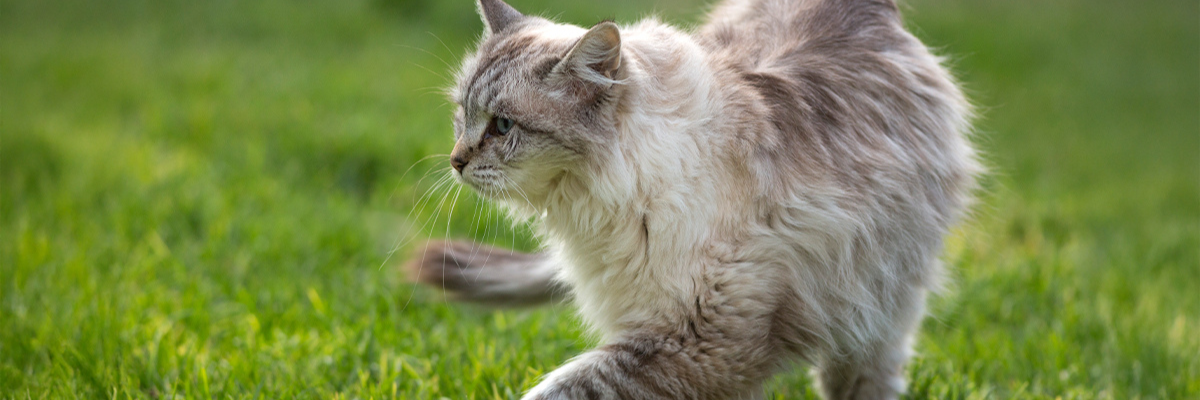Diabetes and its treatment in pets
Diabetes mellitus is a disease in which an animal’s blood sugar level is higher than normal. In dogs, the cause is usually the pancreas’ inability to produce enough insulin hormone to lower blood sugar levels. In cats, on the other hand, the body does not respond properly to the insulin produced. Not all factors contributing to the onset of the disease are known. Being overweight and lack of exercise can predispose to diabetes.
Prevalence
The disease is more common in older animals than in younger ones. In dogs, it is more common in females, while in cats it is more common in males. In female dogs, symptoms often appear in connection with heat (estrus), when hormonal changes cause insulin resistance.
Symptoms
Excessive drinking, urination, and increased appetite are typical symptoms. Usually, the animal is overweight but begins to lose weight as the disease progresses. Untreated disease leads to ketoacidosis, which causes loss of appetite, fatigue, vomiting, and an acetone smell in the breath.
Treatment
Diabetes is treated with insulin medication, diet, and exercise. Treatment requires perseverance and regularity from the owner. The treatment is lifelong. The average lifespan for an animal in good balance with medication is about three years.
Insulin should be stored in the refrigerator, and before use, the liquid should be mixed thoroughly by gently turning the bottle/pen. Note! Do not shake.
For administering injections and dosing the medicine, special insulin syringes with a pre-attached needle and dosage marked in units are used. Syringes are available from pharmacies. Insulin can also be administered with an insulin pen, which requires its own needles. The same syringe can be used up to 24 times if stored in the refrigerator with the needle protected.
The injection is given under the skin, with the site varied. In dogs, injection sites are on the neck and back area; in cats, they are on the sides and under the belly. The number of injections is determined individually and varies from once to three times a day. After the insulin is injected under the skin, the needle should be left in place for a moment to ensure all the liquid exits the needle.
Home Monitoring
The animal’s general condition should be monitored daily: demeanor, appetite, drinking, and alertness. If these are normal, the condition is fairly well balanced. Keeping a record of the pet’s condition is recommended. If there is suspicion that the patient has received too much insulin, or shows symptoms of low blood sugar, the dose may be reduced or skipped entirely. In such cases, it is advisable to consult a veterinarian about further steps. In uncertain situations, it is always safer to give a smaller-than-normal insulin dose or skip the injection entirely than to risk dangerously low blood sugar levels.
Feeding and Diet
In the treatment of diabetes, the regularity of feeding and the composition of the diet are very important. A diet containing slowly digestible carbohydrates and fibers is ideal for a diabetic, as sugar is released into the bloodstream slowly, keeping blood sugar stable.
The food should be high in fiber and low in fat, except in clearly underweight dogs. The best choice is specially formulated diabetic diets. The following products are available from us:
-
Royal Canin Diabetic for dogs and cats (also in wet food for cats)
-
Specific CRD/CRW for dogs (dry and wet food)
-
Specific FRD/FRW for cats (dry and wet food)
The animal can also be fed fiber-rich homemade food, provided fatty and sugary products are avoided. Rapid dietary changes are not recommended.
For patients with two daily injections, half of the daily food portion should be given with the morning injection and the other half with the evening injection. For cats of normal weight, food should be available at all times.
The patient’s weight should remain roughly the same. It should not gain or lose weight unless the patient is overweight, in which case weight loss is recommended. Weight loss should be gradual — about 1–2% of body weight per week is suitable. Weight loss may allow the insulin dose to be reduced. In cats, the need for medication may even disappear entirely once the weight normalizes.
Exercise
Exercise should be calm, regular, and consistent day to day. Heavy exertion can disrupt blood sugar balance. Walks should be scheduled after meals. Biscuits or similar snacks can be carried in case blood sugar drops and the dog becomes weak during a walk.
Insulin Shock
An overdose of insulin causes blood sugar levels to drop. This manifests as trembling, weakness, and unconsciousness. If the animal is conscious, it should be given 1–2 teaspoons of honey, sugar water, or a small amount of food immediately. An unconscious patient should not be given food or water orally, but honey or syrup can be rubbed onto the gums. The patient should be taken to a veterinarian after first aid.
Diabetes Complications
Because heat cycles disturb blood sugar balance, female dogs should have their uterus and ovaries removed once blood sugar levels are stabilized between heat periods. If diabetes develops in connection with heat and is detected early, spaying as soon as the condition allows can, in some cases, restore blood sugar to normal and eliminate the need for medication. Other factors that disturb blood sugar balance include infections, overweight, and certain medications such as corticosteroids and hormone preparations. Cataracts are the most common complication in dogs, though they usually do not cause complete blindness. Cats rarely develop diabetic cataracts. Diabetic animals are prone to urinary tract infections, whose symptoms include frequent urination, increased thirst, and blood in the urine.
Check-ups
Balancing diabetes usually takes a few months, and it is common for the insulin dose to require adjustment. During this period, the patient should have regular check-ups. Once the disease is under control, veterinary check-ups every 3–6 months are sufficient. At these visits, blood values are usually checked, and a urine sample may be taken if necessary. On the day of testing, insulin and food are given as usual.



